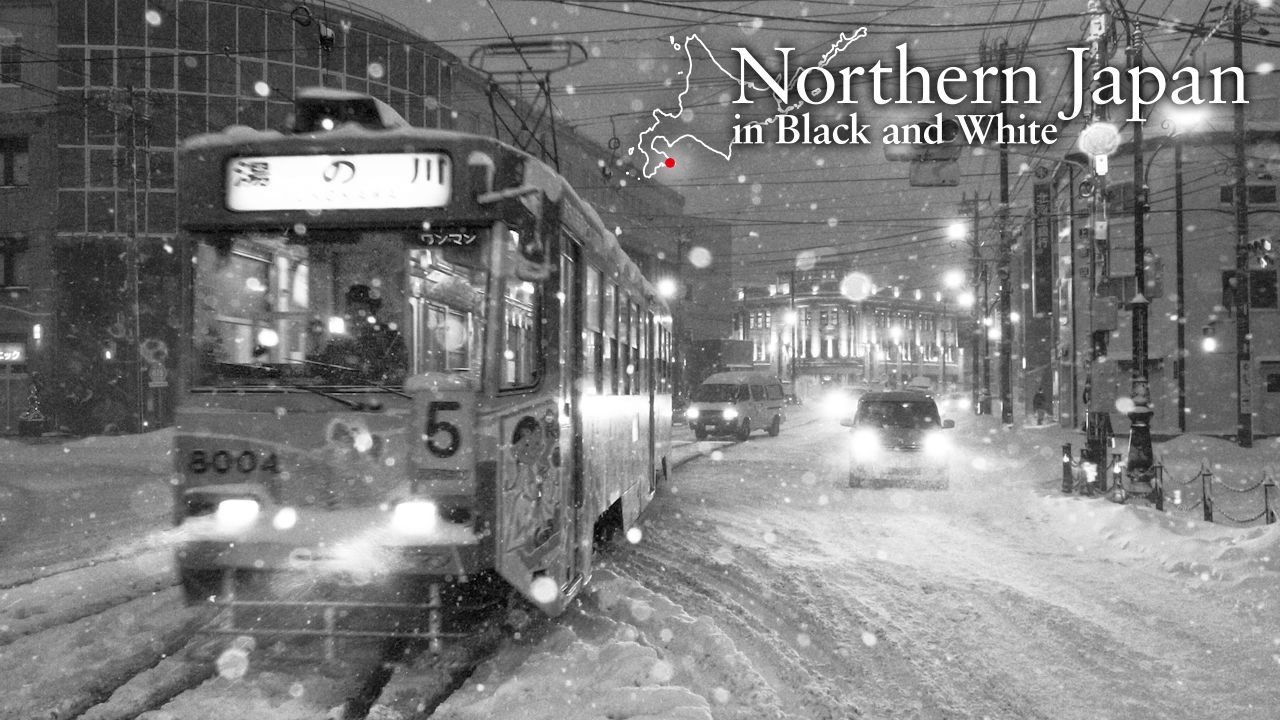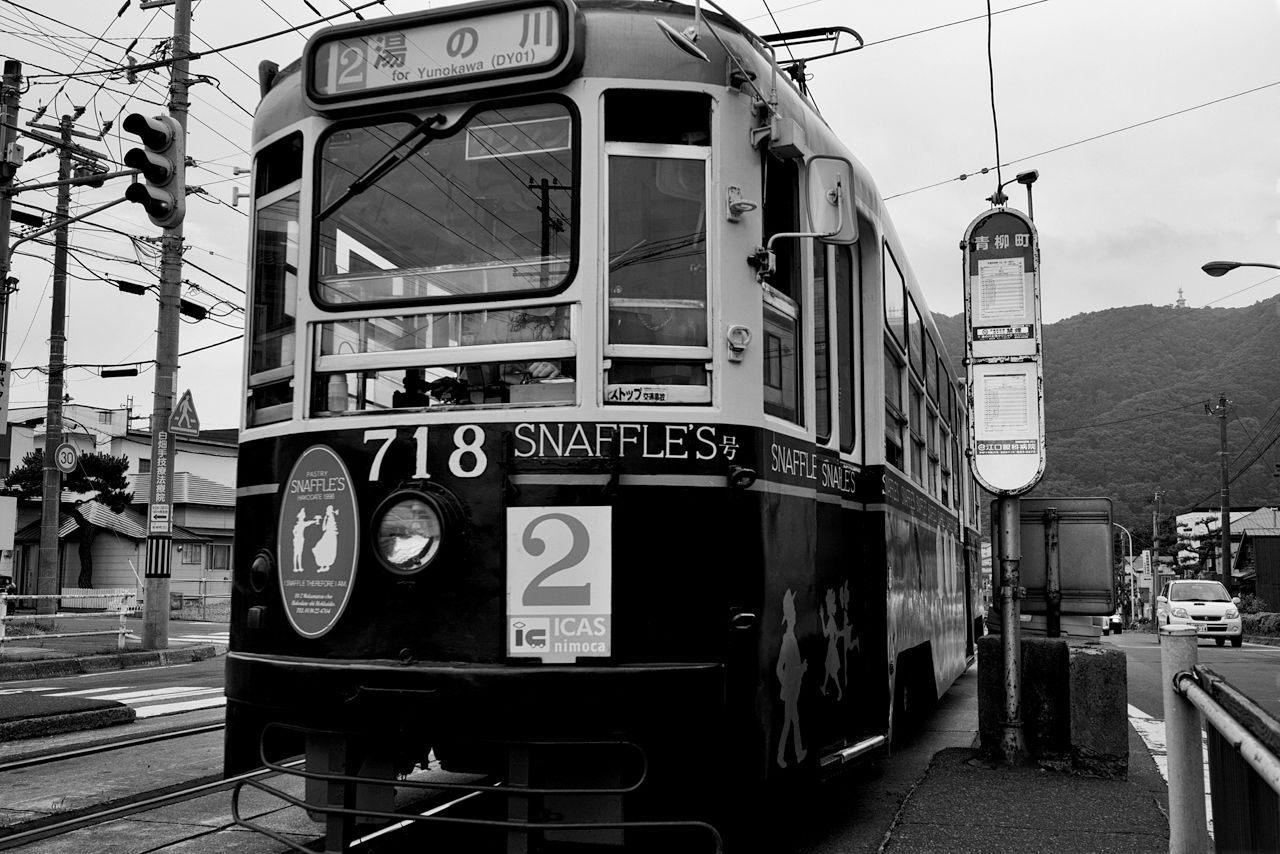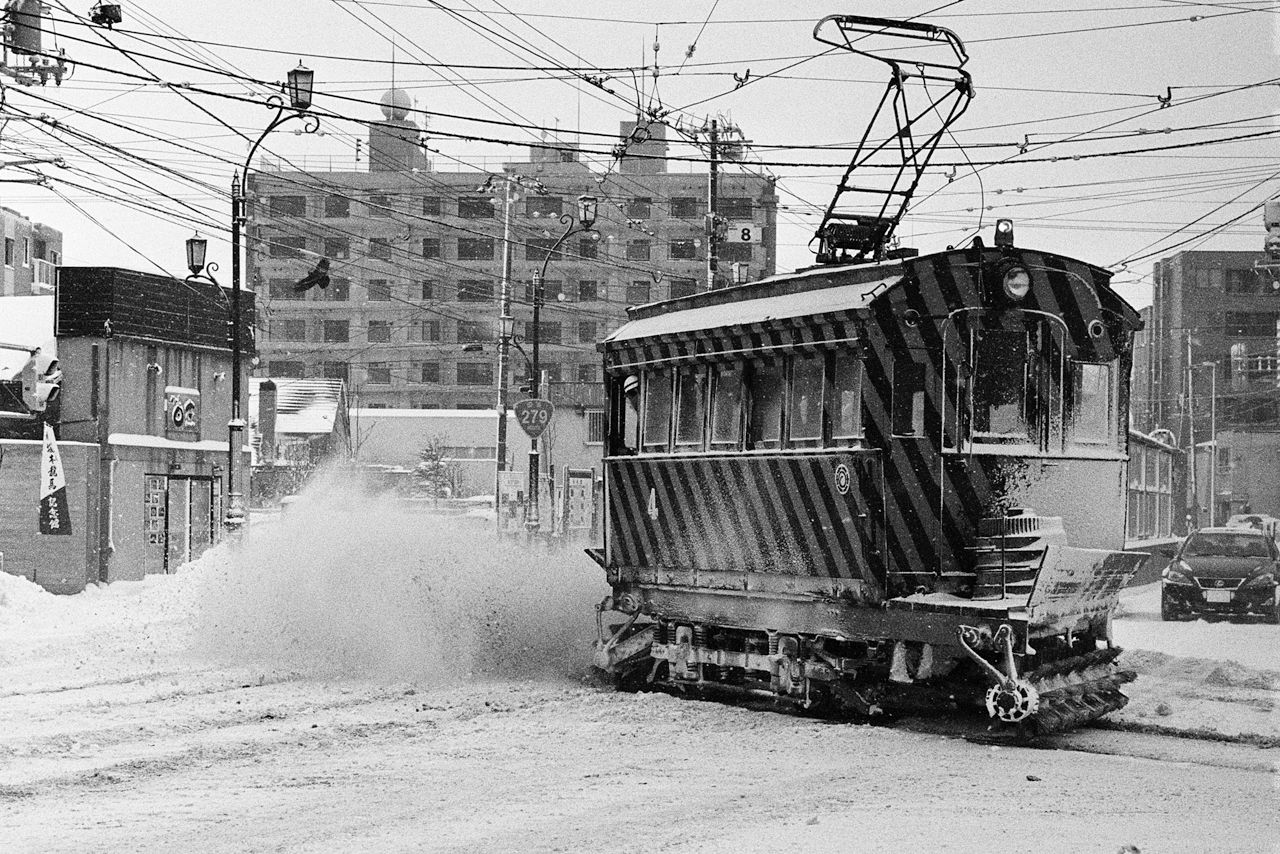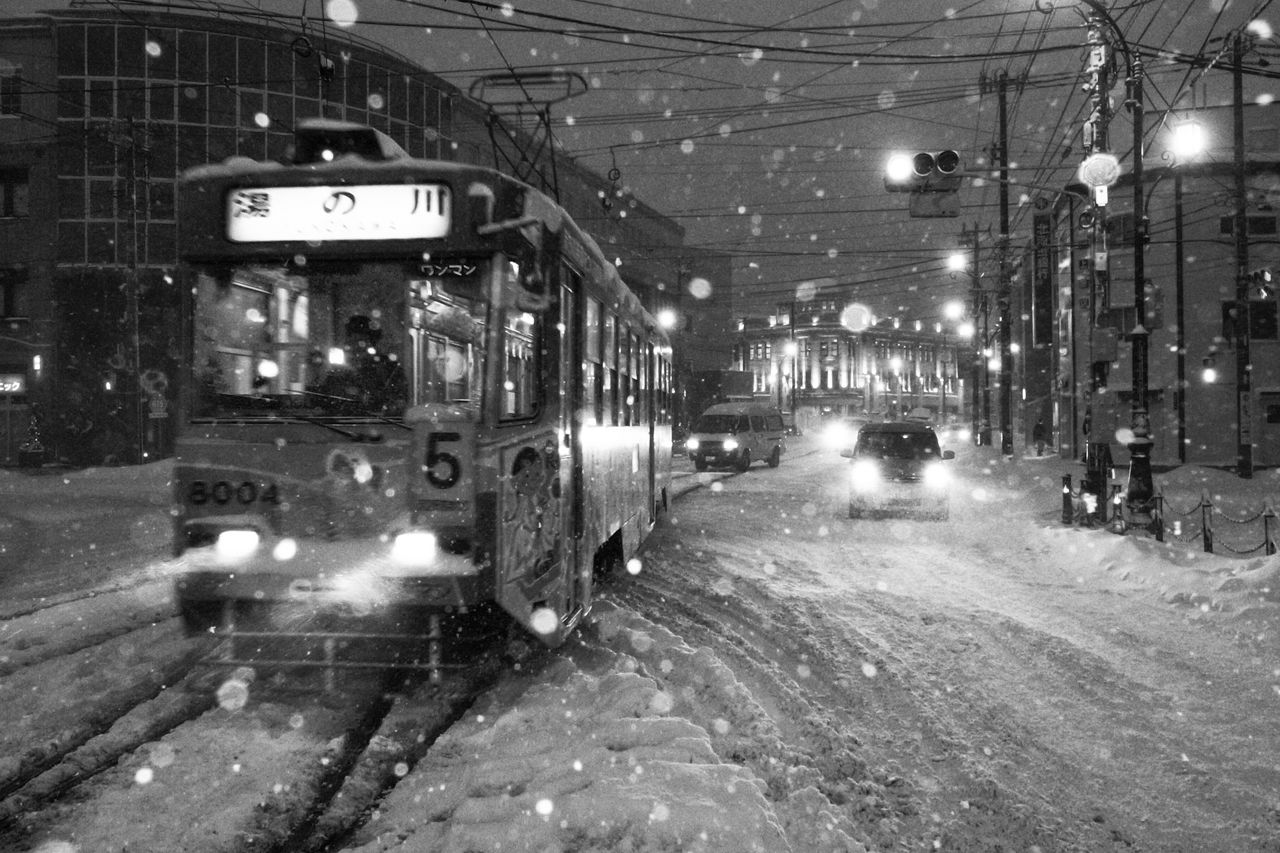
Trams as a Part of Hakodate History
Guideto Japan
- English
- 日本語
- 简体字
- 繁體字
- Français
- Español
- العربية
- Русский
The oldest trams in service in Hokkaidō’s southern city of Hakodate, built 65 years ago, still have wooden window frames. Whenever I step aboard, my high school days come back to me.
On the tram to school we were packed in like sardines. Going home, however, was a leisurely stroll. My route took me down the back streets, at times angrily kicking my wooden geta clogs into the air if I had done poorly at an exam and sneaking glances over the hedge as I passed the tennis court at the girls’ high school.

A tram arrives at the Aoyagi-chō stop.
The 1934 Great Fire of Hakodate, salmon and trout ships returning from northern seas, fishing for squid, the replacement of ferry service to Aomori with the Seikan Tunnel in 1988, development on Mount Hakodate, the revival of the red brick warehouses, the 2016 opening of the Hokkaidō Shinkansen . . . Hakodate’s trams have borne witness to the harbor’s every rise and fall. Six years ago, in 2013, they celebrated their centenary. On that date, a restored streetcar from the late Meiji era (1868–1912) was launched to rapturous applause as the Hakodate Haikara-gō—haikara being a period word referring to something stylish and modern, like the “high collars” of the Western fashion imported in that bygone age.
“We’re floating, floating / As we dance / Let your heart ride the waves, ride the waves . . .” The beloved “Hakodate Harbor Dance” plays as the trams roll through the town, decked out in lights with drivers in happi coats at the wheel. The annual Harbor Festival is here. If, as in days gone by, children in hachimaki headbands would beat the taiko while geisha with shamisen smiled from atop the carriage, the town’s history would come to life once more. And yet . . .
railway tourism Hokkaidō Hakodate photography Northern Japan in Black and White

